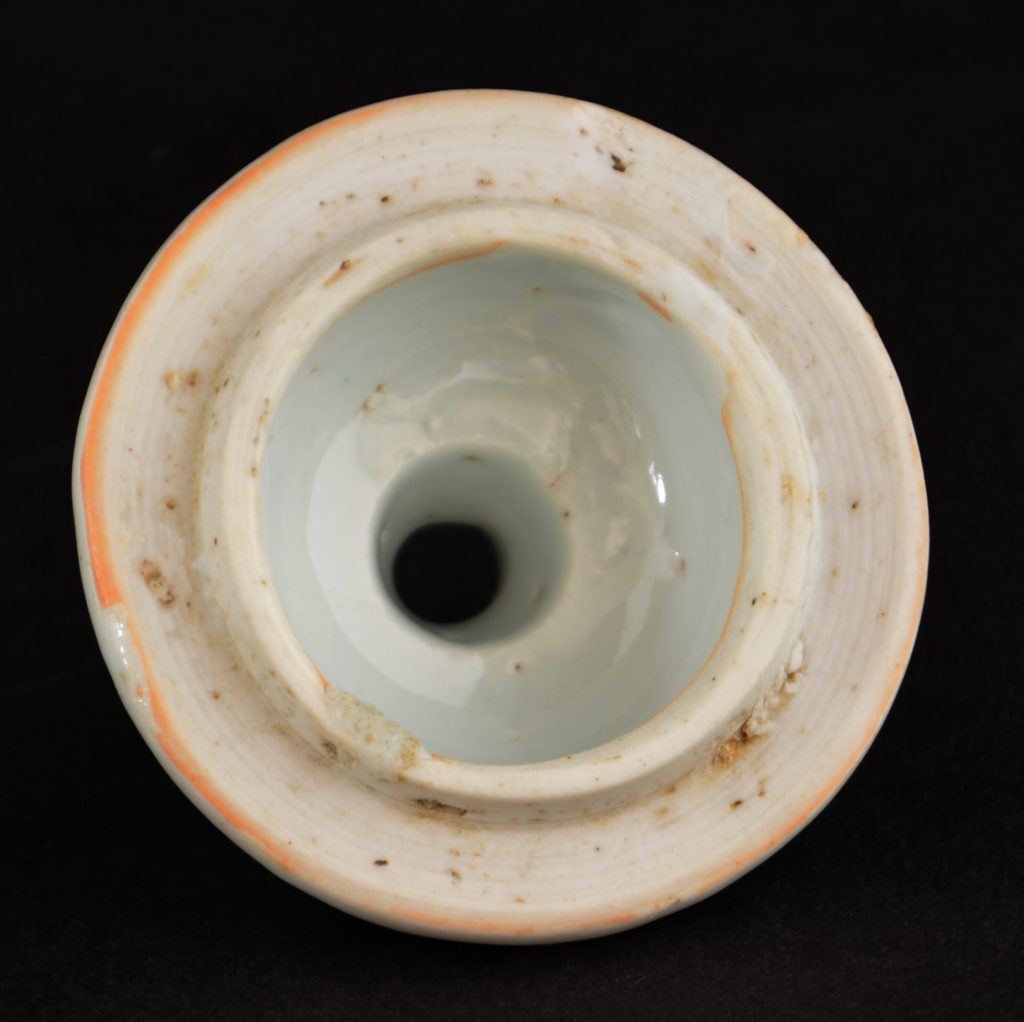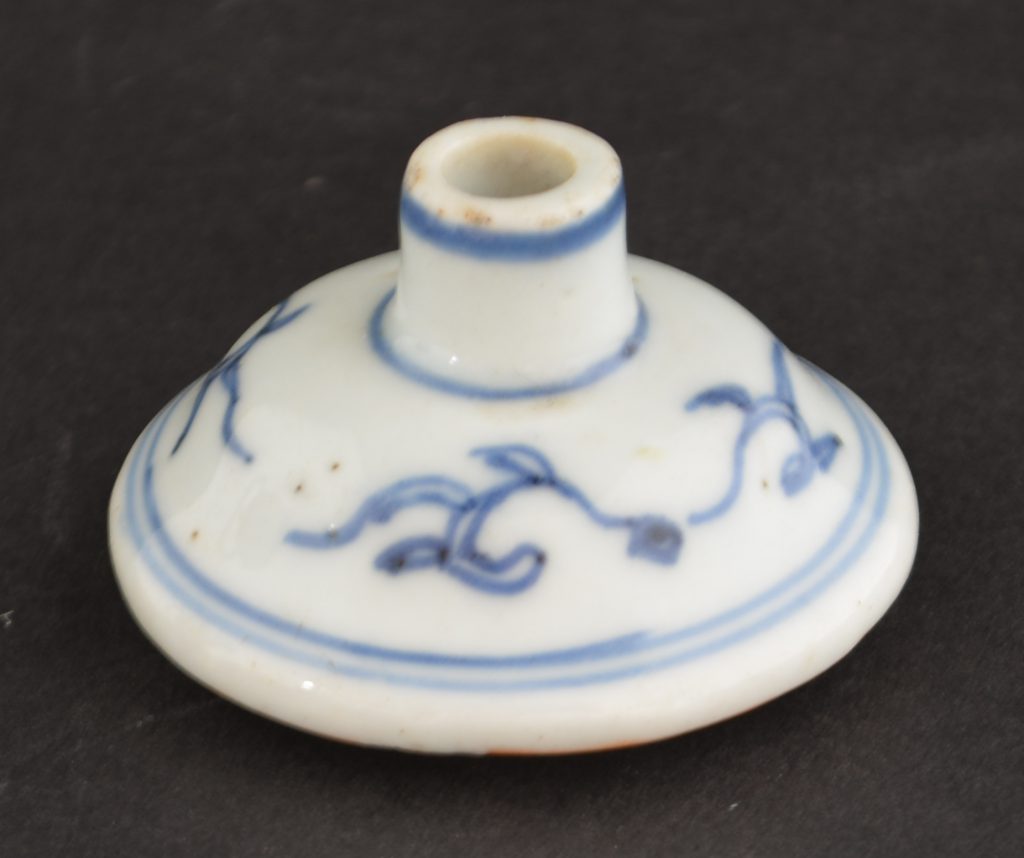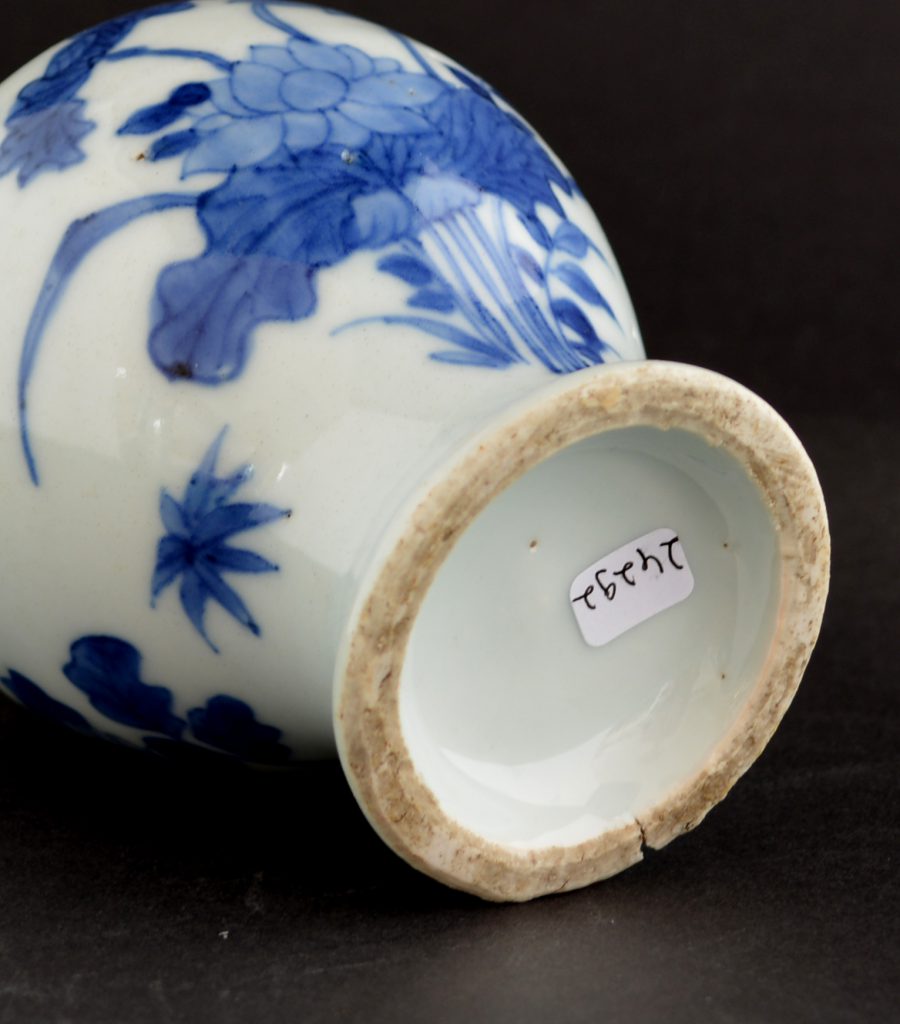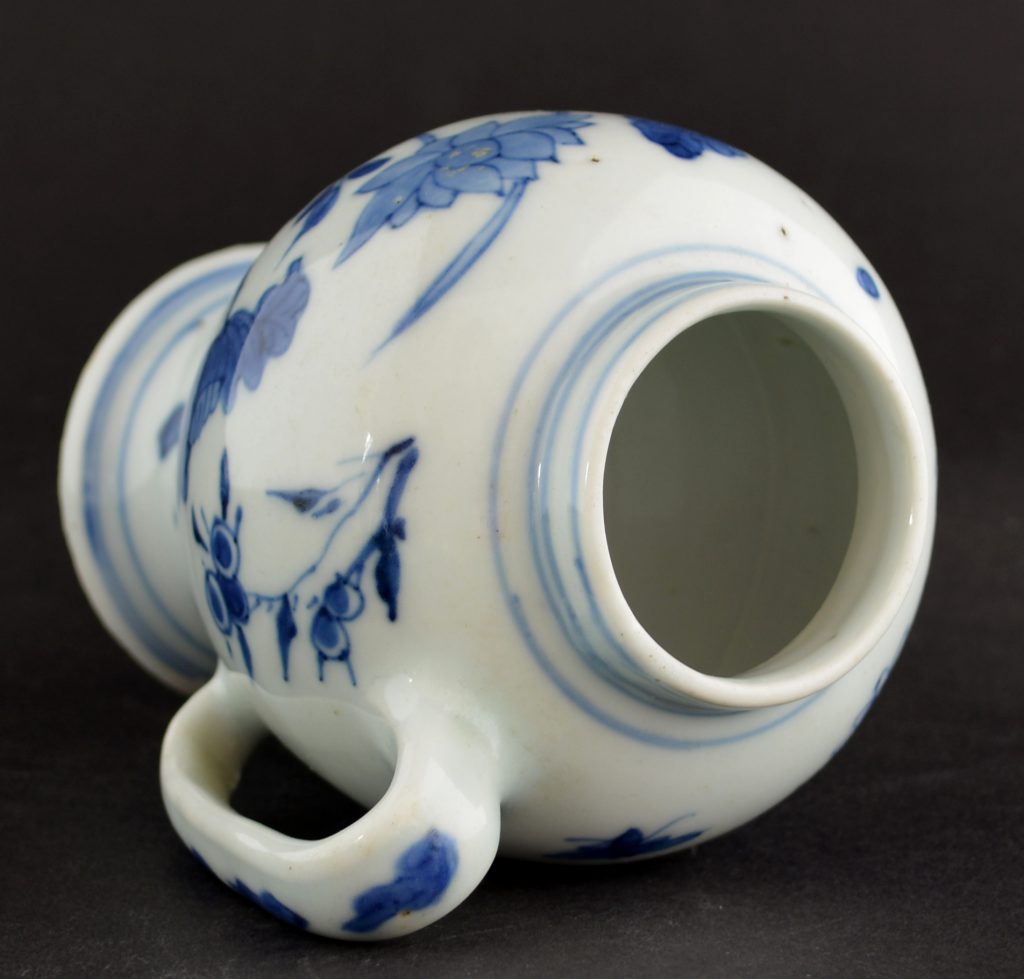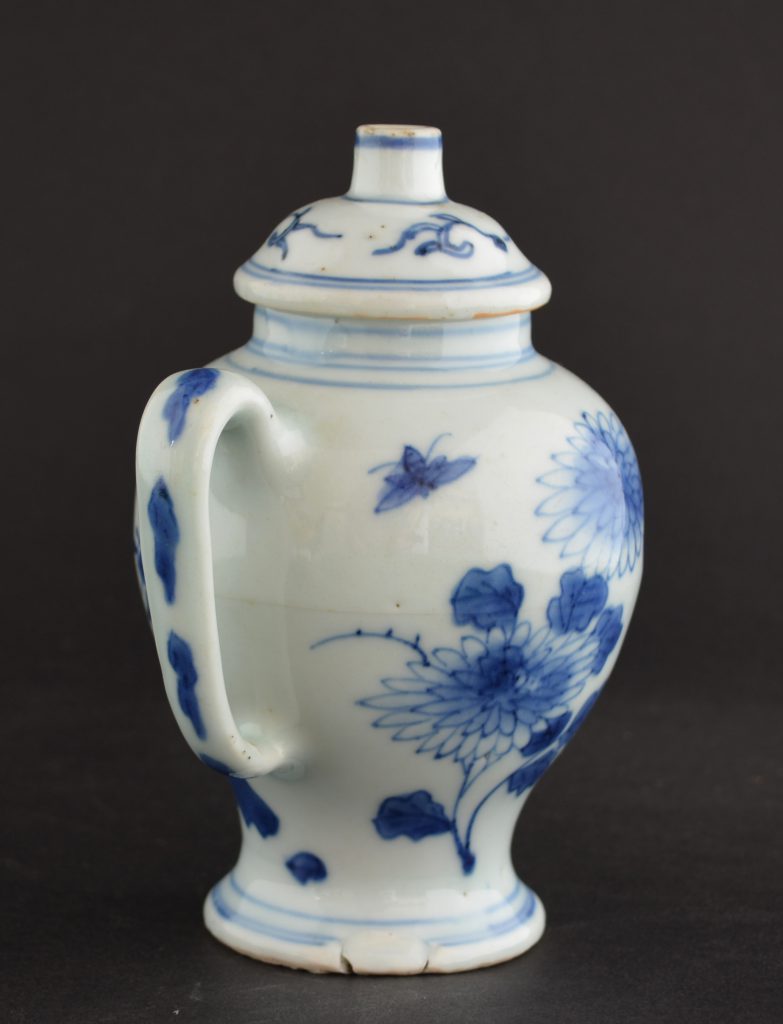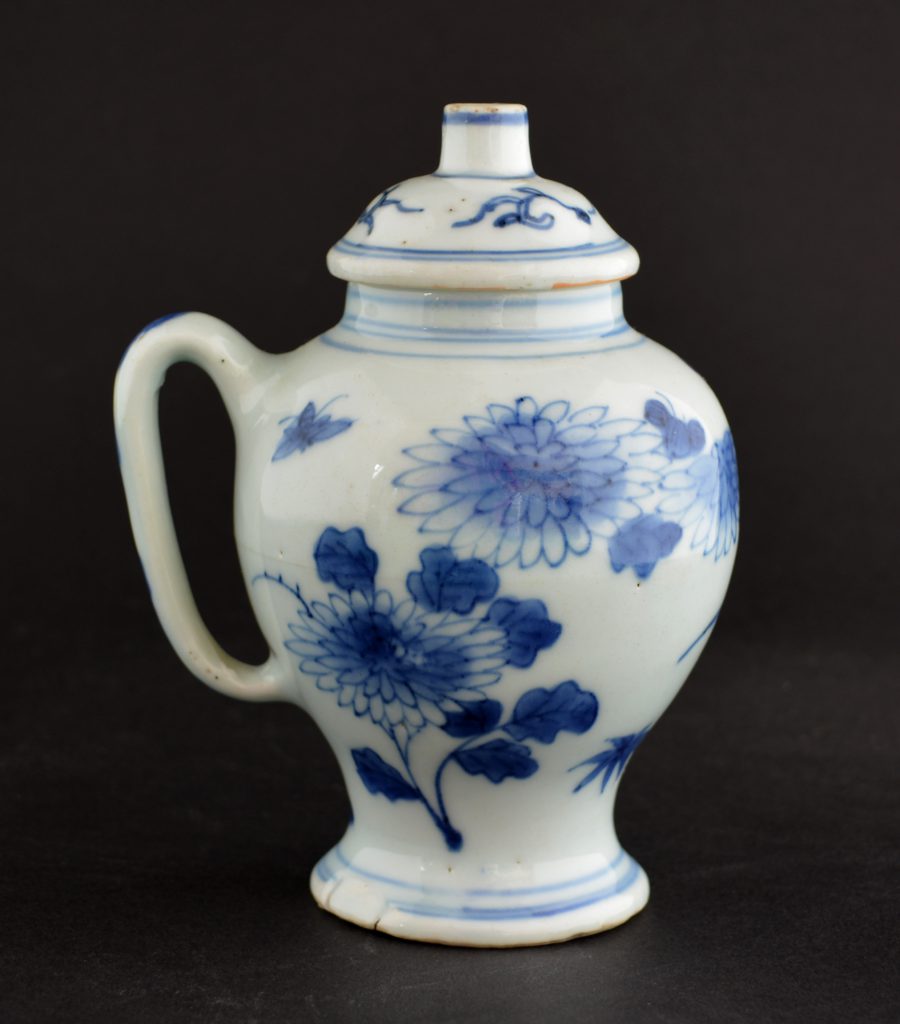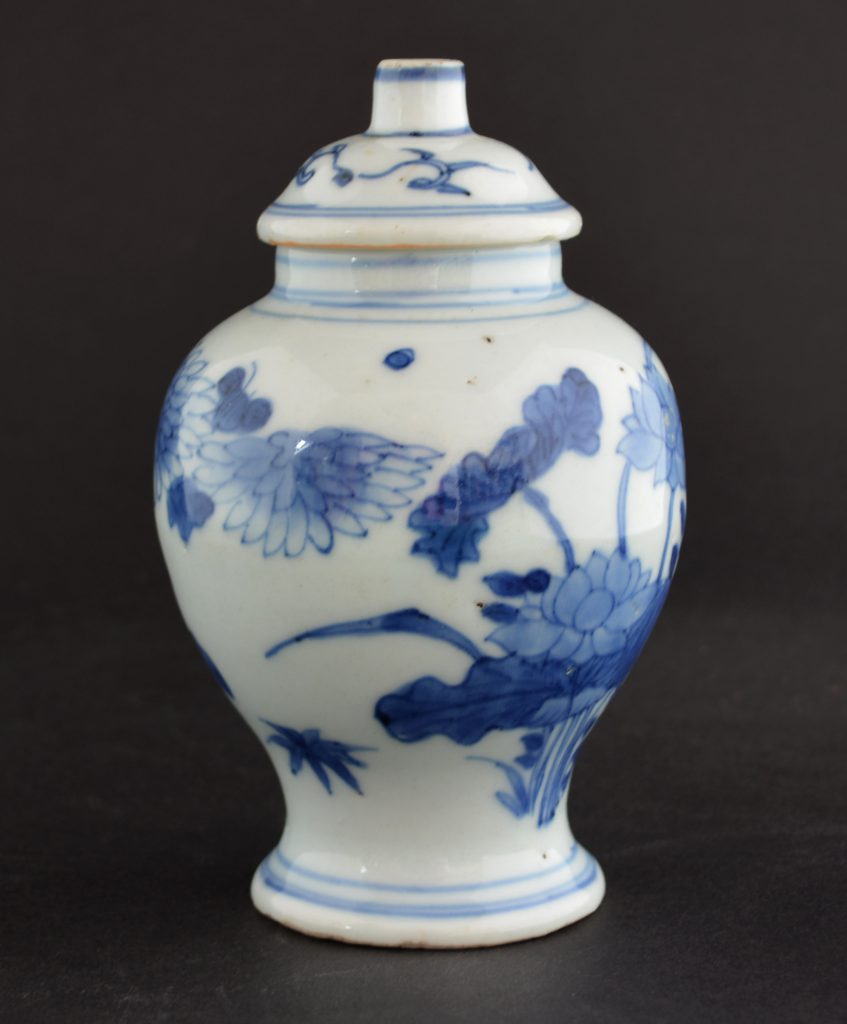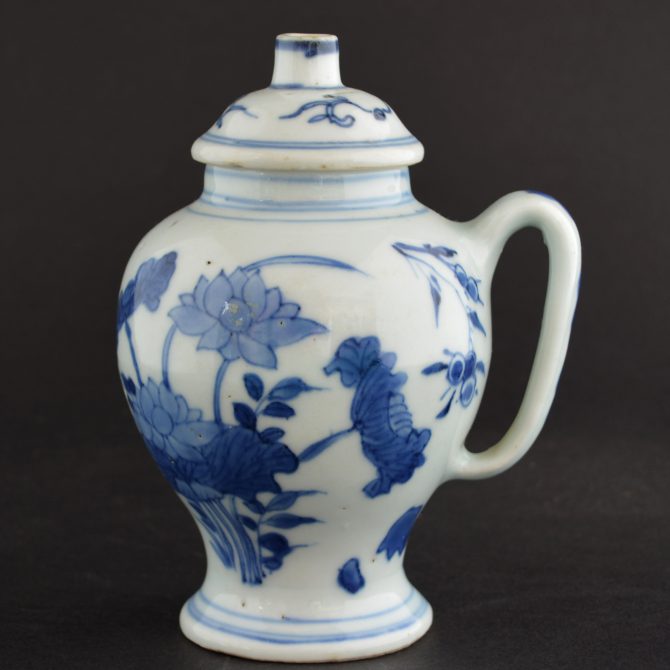
CHONGZHEN or SHUNZHI c.1640 – 1650 Transitional Porcelain
A Transitional Blue and White Porcelain Mustard Pot and Cover, Chongzhen or Early Shunzhi c.1640-1650. The Western Form is Decorated with Groups of Flowering Lotus and Chrysanthemum.
SOLD
- Condition
- N/A
- Size
- Height : 13.5 cm (5 1/3 inches)
- Provenance
- Purchased from Pieter Hooggendijk Antiquair, Baarn, Holland, 1990. A Dutch Noble Family.
- Stock number
- 24292
- References
- According to Volker, mustard pots were made for the Dutch market and shipped regularly from c.1639. A mustard pot of this type with a cyclical date of 1643 was sold at Sotheby`s in May 1971. For a silver mounted Blue and White Transitional Porcelain mustard pot and cover of this type dated to c.1635-1644 see : Transitional Wares and Their Forerunners (The Oriental Ceramic Society of Hong Kong, 1981) page 103 plate 48. For another Blue and White Transitional Porcelain mustard pot and cover of this type dated to c.1635-1645 see : Seventeenth Century Jingdezhen Porcelain from the Shanghai Museum and the Butler Collection (Shanghi Museum,2006. ISBN 1-85759-417-7) page 88 plate 45.
Information
The hole in the cover was perhaps used for a small spoon to extract the mustard.
The Transitional Period :
The roots of this unsettled period starts during the later part of Wanli`s reign (1573-1620). At the begging of his reign China was doing very well, new crops from the Americas such as peanuts, maize and sweet potatoes increased food production, while simplified taxes helped the state run smoothly. But this was not due to Wanli`s enlightened reign, but to his Mother championing a man that was to become the Ming dynasties most able minister, Zhang Zhuzheng (1525—1583). Wanli became resentful of Zhuzheng`s control but upon his death became withdrawn from court life. Between 1589 to 1615 he didn`t appear at imperial audiences, leaving a power vacuum that was filled by squabbling ministers. Mongols from the North raided as Japan invaded Korea. Wanli re-opened the silver mines and imposed new taxes but the money was lost due to corruption, as well as being frittered away by the indulgent Emperor himself . The next emperor of Ming China, Tianqi (1621-1627), was bought up in this self indulgent disorganised environment, at the very young age 15 his short reign started. He didn`t stand a chance. Tianqi made the mistake of entrusting eunuch Wei Zhongxian (1568-1627) who Anna Paludan in her excellent book "Chronicle of the Chinese Emperors" (Thames and Hudson, 1998) describes as "a gangster of the first order". Tianqi was deemed to have lost the Mandate of heaven by the Ming people. Tianqi`s younger brother, the last of the Ming Emperors, Chongzhen (1628-1644), was not able to save the situation. The systems of administration had broken down, corruption was rife and so when a sever famine broke out in 1628 nothing much could be done. Anna Paludan describes the tragic end to the great Ming Dynasty "The final drama was worthy of a Greek tragedy. The emperor called a last council in which `all were silent and many wept`, the imperial troops fled or surrendered, and the emperor, after helping his two sons escape in disguise, got drunk and rushed through the palace ordering the women to kill themselves. The empress and Tianqi`s widow committed suicide; the emperor hacked off the arm of one daughter before killing her sister and the concubines. At dawn he laid his dragon robe aside and dressed in purple and yellow, with one foot bare, climbed the hill behind the now silent palace and hanged himself on a locust tree". The Great Wall of China, started 2,000 years ago was built to protect China from the Northern barbarian hoards, it was often tested and sometimes failed. The Jin people invaded China, ruling the North between 1115 and 1234, it was their descendants the Manchus, Jurchens from south east Manchuria that took full advantage of the problems of the Ming dynasty. In 1636 they adopted a Chinese dynastic name, the `Great Qing` (Qing meaning pure). The first of the Qing emperors was Shunzhi (1644-1661) but for most of his reign his uncle ran the state. War raged on during this period and it wasn`t until the second Qing emperor Kangxi (1662-1722) that true peace was achieved. Kangxi was a wise and educated man, he became a highly successful emperor bringing China a long period of wealth and stability.
Lotus :
The lotus is one of the most important symbols in the Chinese art. This Buddhist emblem is a symbol of purity, as the perfect flower grows out of muddy ponds without a stain. The words for lotus in Chinese has the same meaning as to bind, connect (in marriage). It is one of the Eight Auspicious Symbols of Buddhism. It is the flower used to represent summer.
